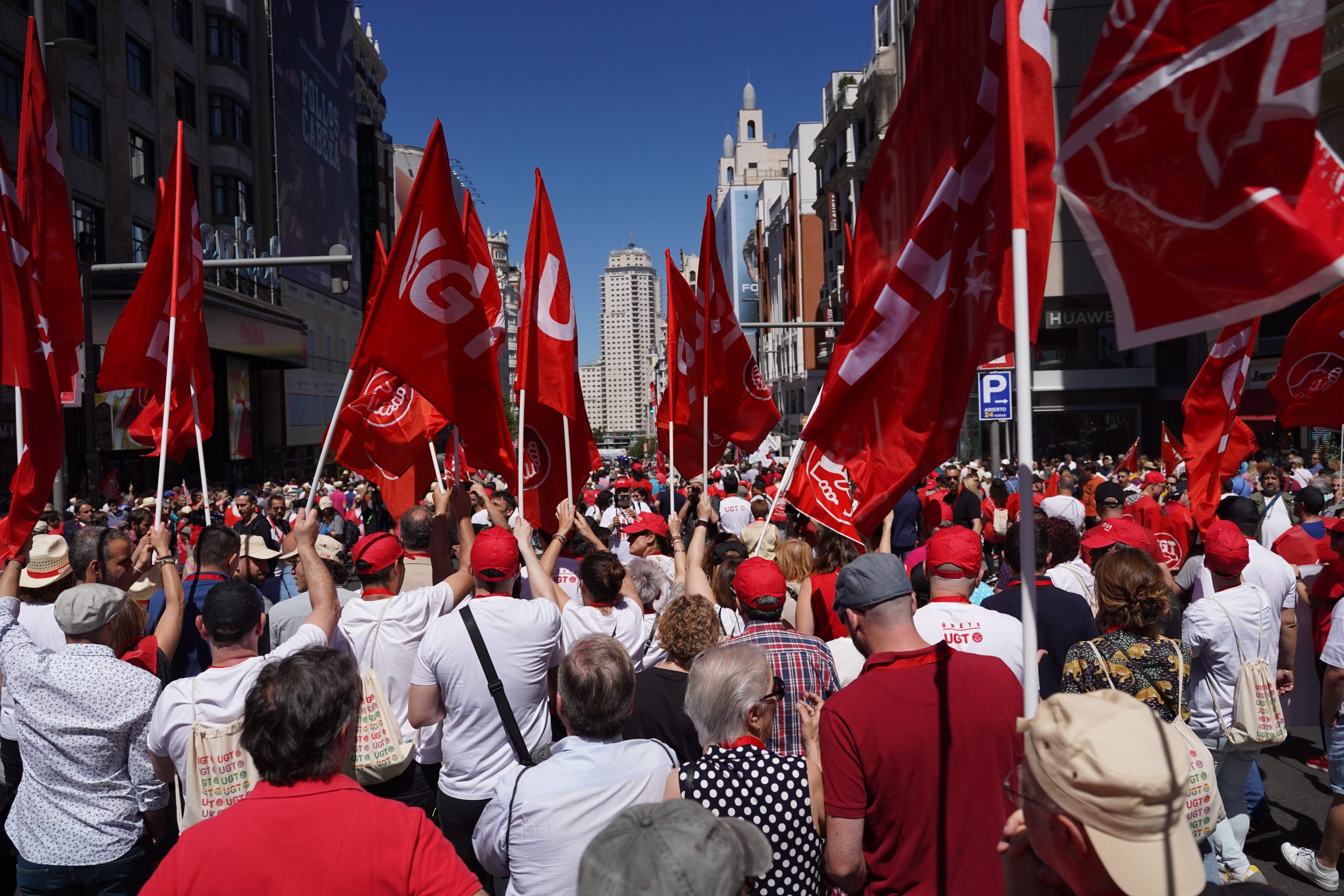SPAIN is enjoying the Labour Day bank holiday on Wednesday- a May 1 celebration dating back to 1889 that was banned for decades under the Franco dictatorship.
The Dia del Trabajador, or Primero de Mayo, is dedicated to workers and the vindication of workers rights in Spain.
Reinstated in 1978- three years after General Franco’s death- May 1 sees marches across Spain in which social advances for the working classes are celebrated.

Labour Day originates from the end of the 19th century, when working movements began to gain strength in the United States.
It is said that the masons and carpenters of New York and Boston took the lead in the early stages of the workers’ struggle.
The fixed date of May 1 originates from Chicago’s Haymarket Revolt in 1886, where US workers went on strike after a standard eight-hour working day wasn’t imposed by employers.
Days of violent clashes resulted in several policemen being killed and 30 men being jailed.
Following a controversial 1887 trial, five trade unionists were sentenced to death, two to life imprisonment and one to 15 years of hard labour.
They are now known as the Chicago Martyrs or the Haymarket Martyrs.

Two years after the executions, in 1889, the Socialist Workers’ Congress of the Second International declared May 1 as International Workers’ Day in memory of the martyrs and to promote the idea of implementing an eight-hour day in all countries.
That same year, Spanish socialists held the first Dia del Trabajador, organising peaceful protests to support workers, but that coincided with anarchists calling for a revolutionary strike on the same day.
Socialists had thousands march to the Council of Ministers to deliver their protests, while the anarchists marched on Congress of Deputies.
The Madrid marches went off peacefully, but other parts of Spain saw conflict.
Protests in the Basque Country lead to organisers losing their jobs, and a subsequent strike and riots led to a state of war being declared with tensions not dying down until May 21.
Anarchist marches in Valencia, Barcelona, and other Catalan areas also caused strikes and violence, with workplaces closing and the Guardia Civil having to intervene.
The riots meant that the following year’s Dia del Trabajador saw public meetings banned, so socialists limited their protests to a break from work and private celebration, while anarchists continued with their one-day strike.
A compromise was reached in 1891 when a combined Labour Day was proposed, so both groups could celebrate in relative harmony, thus promoting an element of pacifism.
Labour Day was not declared an official holiday until 1931, with the beginning of the Second Spanish Republic.
Roughly 300,000 people marched in Madrid, where then-president Niceto Alcala-Zamora announced ‘the end of social antagonism’.











